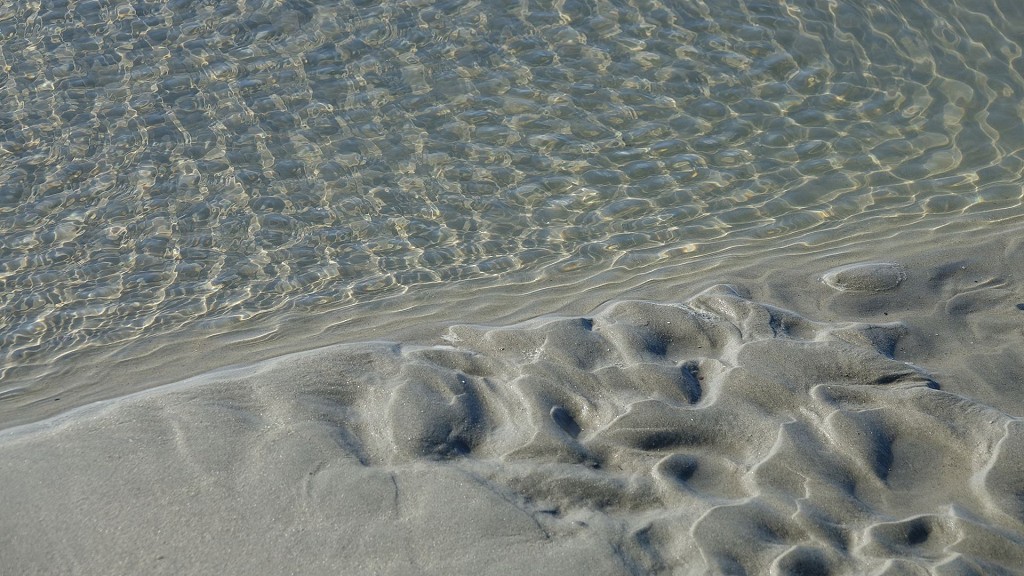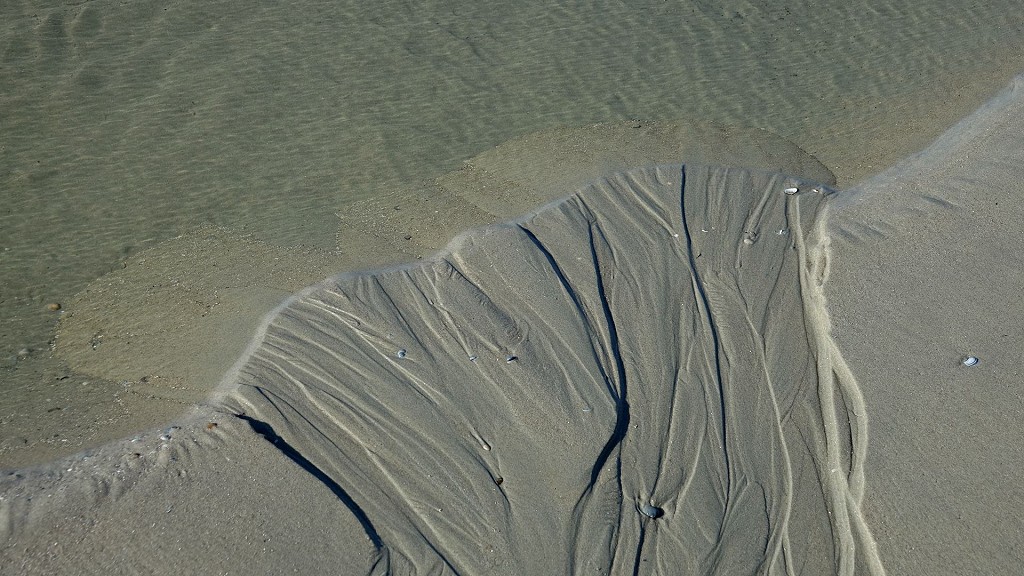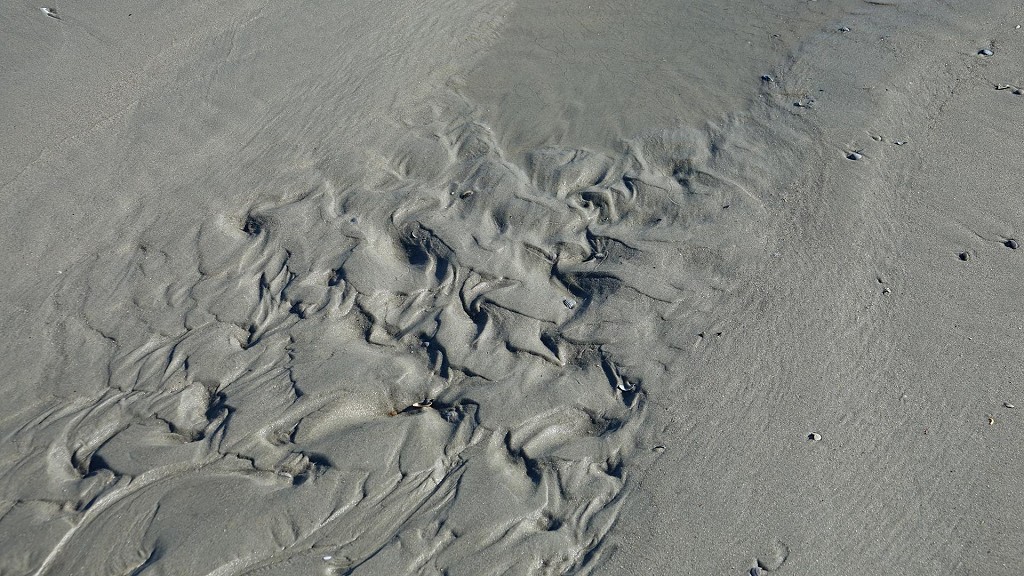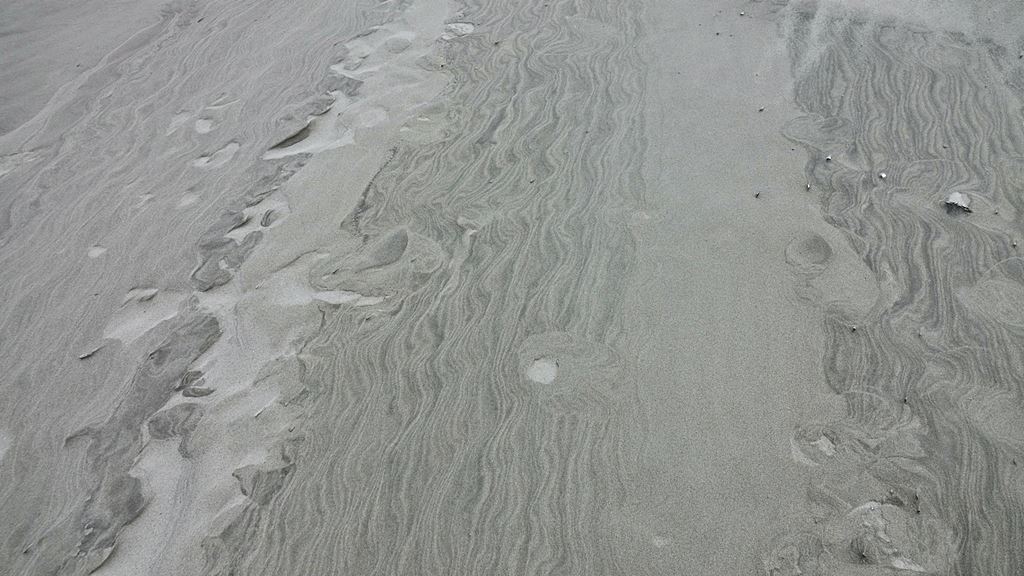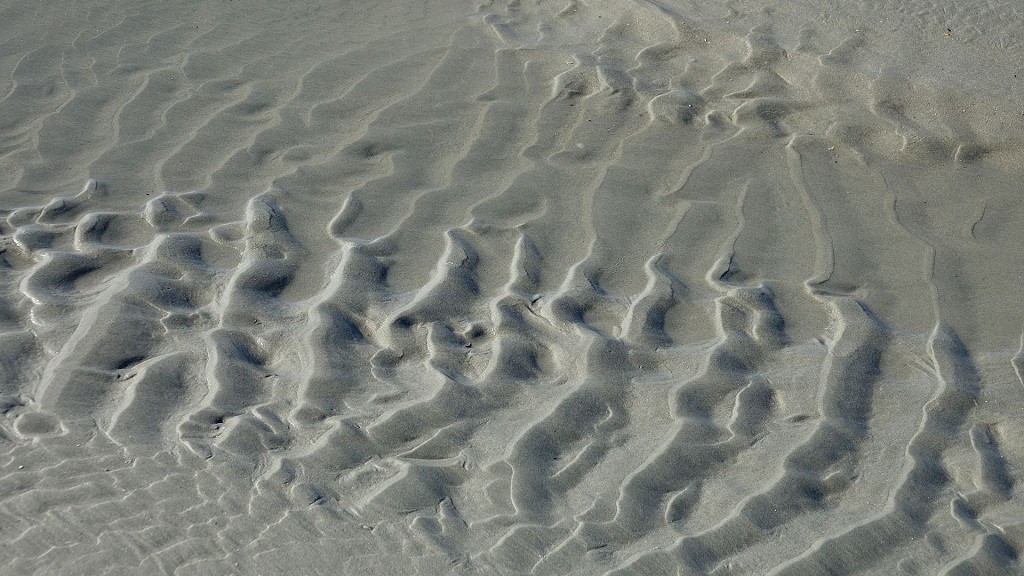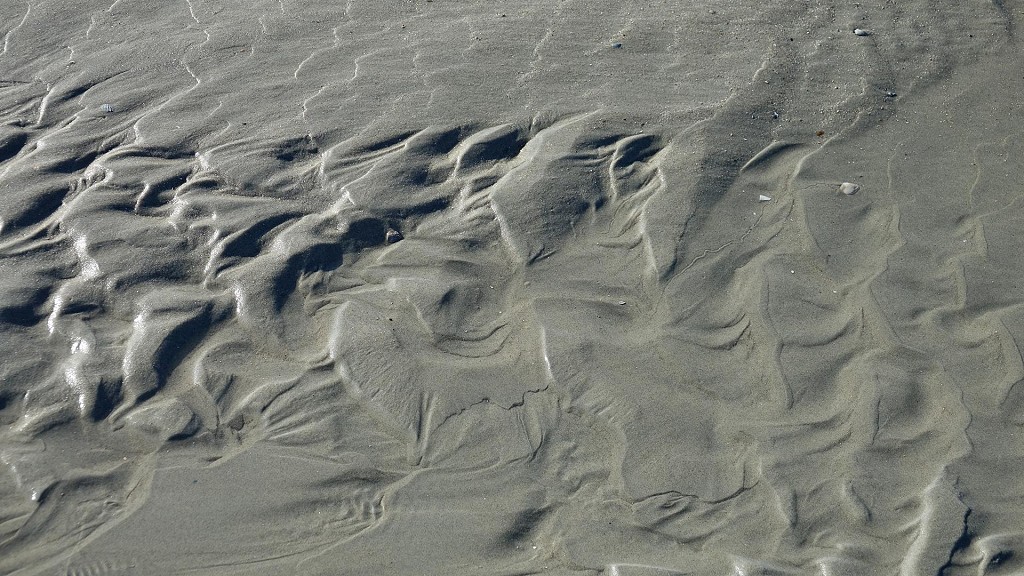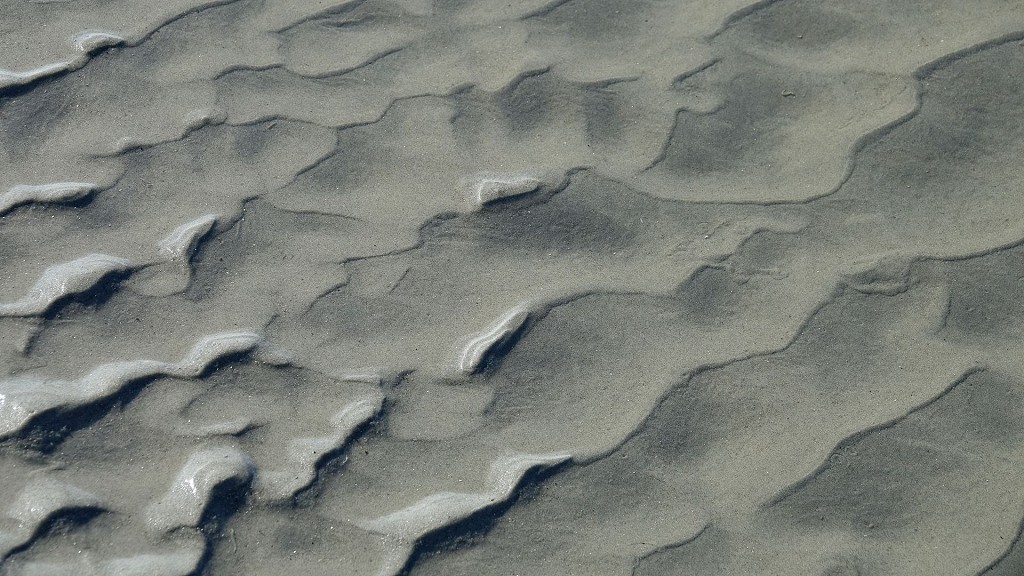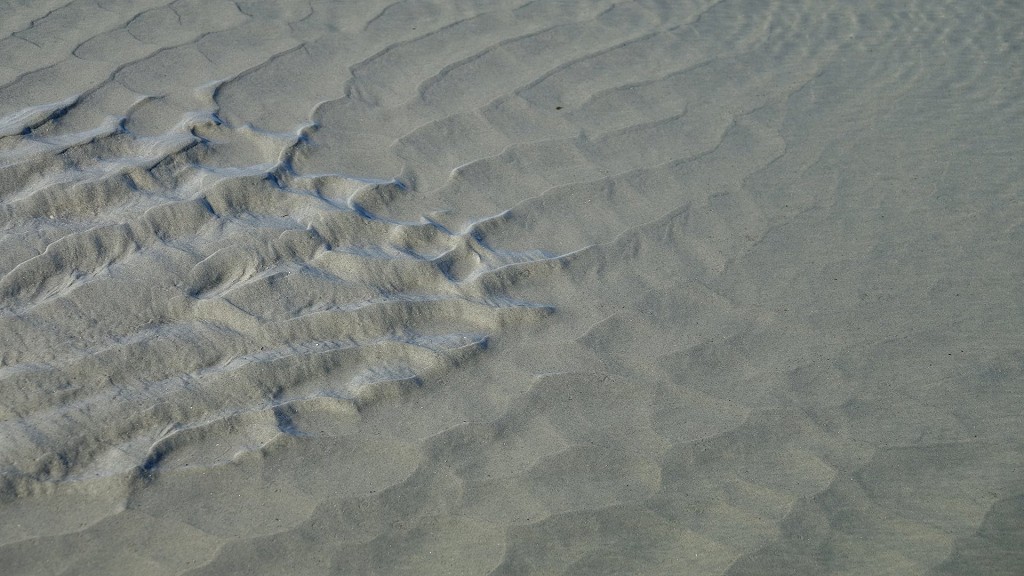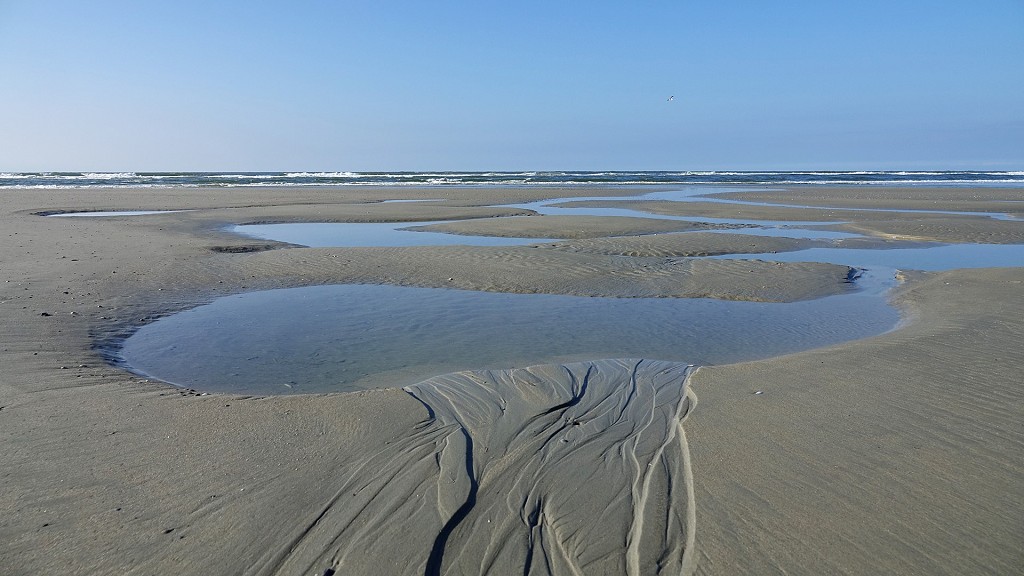Wellen im Sand
Dedicated to the British engineer, mathematician, physicist,
inventor and suffragette Hertha Marks Ayrton
[p. 288] Having established the primary ridge, and found the conditions necessary for its formation from smooth and level sand, the next question that arose was, how are all the other ripples started ? Do they depend for their initiation simply on unevennesses of the surface, or are they also subject to some definite law ? [...]
The solution of the problem cost me several weeks of observation and experiment, yet it was absurdly simple when it came. It was that a single ripple, existing alone, in otherwise smooth sand, initiates a ripple on either side of it, that each of these ripples produces another on its farther side – these in their turn originate other ripples on their farther sides, and so on, till the whole sand is ripple-marked. This suggestion having occurred to me, I tried in many ways to make sure that it was correct. [...]
[307] For the ripple-mark that I have hitherto considered, one of two conditions was necessary to start the ripples. Either the oscillating water had to have at least one constant place of maximum longitudinal velocity, or there must be at least one obstacle or hollow in the sand to give birth to vortices. Of obstacles in the shape of stones, bunches of seaweed, etc., as well as of hollows, there is generally no lack on a sandy shore, but the question arises— would a beach that was entirely smooth and featureless to begin with become ripple-marked when the sea oscillated over it? [...]«
Quoted from: The Origin and Growth of Ripple-Mark. Ayrton, H. Proceedings of the Royal Society of London. Series A, Containing Papers of a Mathematical and Physical Character (1905-1934). 1910-10-21. 84 (571):285–310.
| Aufnahmedatum: | 22. Mai 2019 |
| Aufnahmeort: | Nordseeinsel Juist |
| Position: | 53.677221, 6.943082 |
| Kamera: | Sony RX10 III |
| Tags: | Rippel |
Links
-
The Origin and Growth of Ripple-Mark
Beitrag von Mrs. Hertha Ayrton aus dem Jahr 1910 auf ARCHIVE.ORG -
Pattern Dynamics of Vortex Ripples in Sand: Nonlinear Modeling and Experimental Validation
Beitrag von K.H. Andersen, M. Abel, J. Krug, C. Ellegaard, L.R. Soendergaard, J. Udesen auf ARXIV.ORG vom 29. Januar 2002 -
Weltformel für Körnchenmuster
Beitrag von Max Rauner in DIE ZEIT vom 1. August 2002 zum Stand der Sandforschung -
Wie im Kleinen ...
Beitrag auf SCINEXX.DE vom 24. November 2006 -
Warum bilden sich Wellenmuster im Sand?
Beitrag von Irena Kampa auf WELTDERPHYSIK.DE vom 16. August 2010 -
Strömungsrippeln auf Juist
Beitrag auf GEOCACHING.COM vom 5. Januar 2013
